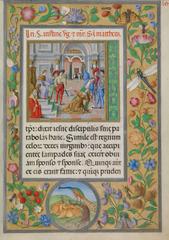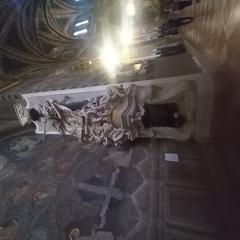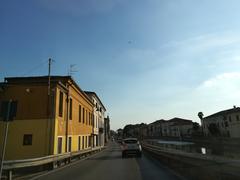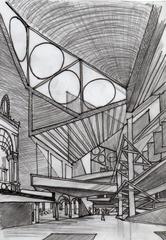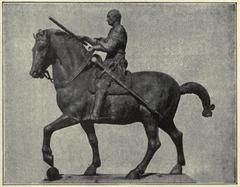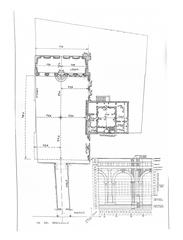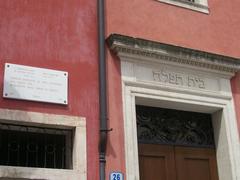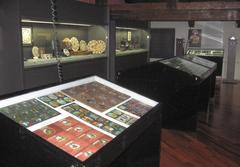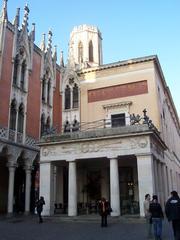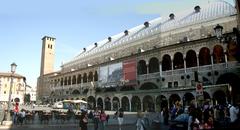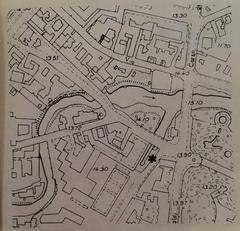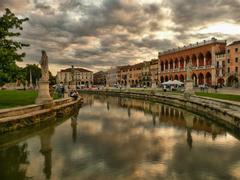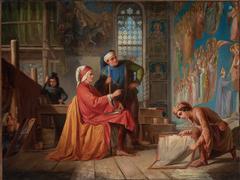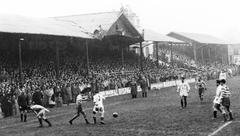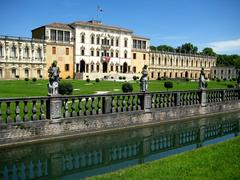Chiesa degli Eremitani Visiting Hours, Tickets, and Historical Sites in Padua
Date: 20/07/2024
Introduction
The Chiesa degli Eremitani, or the Church of the Hermits, in Padua, Italy, stands as a monumental testament to medieval architecture, artistic brilliance, and resilient restoration efforts. Constructed in the 13th century by the Hermits of Saint Augustine, the church has witnessed significant historical events and transformations over the centuries. Its architectural style, featuring Gothic elements such as pointed arches, ribbed vaults, and flying buttresses, reflects the transitional period from Romanesque to Gothic architecture. One of the church’s most remarkable artistic contributions is the frescoes by Guariento di Arpo and Andrea Mantegna, particularly in the Ovetari Chapel, which have been celebrated for their innovative use of perspective and anatomical precision. However, the church’s history is also marked by destruction, notably during World War II when Allied bombings caused severe damage, leading to extensive restoration efforts that have become a model for art conservation (Padua Tourism, Art Restoration Journal). This guide provides a comprehensive overview of the Chiesa degli Eremitani’s rich history, cultural significance, and essential visitor information, ensuring that your visit to this historical gem is both enjoyable and enlightening.
Table of Contents
History of Chiesa degli Eremitani
Origins and Early Construction
The Chiesa degli Eremitani, also known as the Church of the Hermits, is a significant historical and architectural landmark in Padua, Italy. The church’s origins date back to the 13th century when it was constructed by the Hermits of Saint Augustine. The initial construction began in 1276 and was completed in 1306. The church was built on the site of an earlier chapel dedicated to Saint Christopher, which was incorporated into the new structure.
Architectural Style
The Chiesa degli Eremitani is a prime example of Gothic architecture, characterized by its pointed arches, ribbed vaults, and flying buttresses. The church’s façade is relatively simple, with a large rose window and a portal adorned with statues of saints. The interior of the church is equally impressive, with a nave and two aisles separated by columns and arches. The wooden ceiling, which dates back to the 14th century, is a notable feature of the church’s interior.
Frescoes by Guariento di Arpo
One of the most significant aspects of the Chiesa degli Eremitani is its frescoes, particularly those by the artist Guariento di Arpo. Guariento was commissioned to decorate the church’s apse and the adjacent chapel of Saint James in the mid-14th century. His frescoes depict scenes from the life of Saint Augustine and the Passion of Christ. These frescoes are considered some of the finest examples of 14th-century Italian art and are a testament to Guariento’s skill as a painter.
The Ovetari Chapel
The Ovetari Chapel, located within the Chiesa degli Eremitani, is another highlight of the church’s history. The chapel was commissioned by the Ovetari family in the mid-15th century and was decorated with frescoes by several artists, including Andrea Mantegna. Mantegna’s frescoes in the Ovetari Chapel are particularly renowned for their use of perspective and their detailed depiction of figures and landscapes. Unfortunately, many of these frescoes were destroyed during World War II, but efforts have been made to restore and preserve what remains.
World War II and Restoration
The Chiesa degli Eremitani suffered significant damage during World War II. On March 11, 1944, an Allied bombing raid targeted the nearby railway station, and the church was severely damaged by the resulting explosions. The roof and much of the interior were destroyed, and many of the frescoes, including those by Mantegna, were lost or severely damaged.
In the years following the war, extensive efforts were made to restore the church and its artworks. The restoration process was complex and challenging, involving the use of advanced techniques and materials to stabilize and repair the damaged structures and frescoes. Despite the extensive damage, the restoration efforts have been largely successful, and the Chiesa degli Eremitani remains a significant cultural and historical site in Padua.
Visitor Information
Visiting Hours and Tickets
The Chiesa degli Eremitani is open to visitors from Monday to Saturday, 9:00 AM to 7:00 PM, and on Sundays from 1:00 PM to 7:00 PM. Admission is free, but donations for the church’s upkeep are appreciated. For the most up-to-date visiting hours and any special closures, visit the official Padua Tourism website.
Travel Tips
The church is located in the heart of Padua, making it easily accessible by foot, bicycle, or public transportation. If you’re traveling by car, several parking options are available nearby. The church is also within walking distance of other notable attractions, such as the Scrovegni Chapel and the Eremitani Civic Museums.
Nearby Attractions
While visiting the Chiesa degli Eremitani, consider exploring nearby attractions like the Scrovegni Chapel, known for its exquisite frescoes by Giotto, and the Eremitani Civic Museums, which house a vast collection of art and historical artifacts.
Accessibility
The Chiesa degli Eremitani is accessible to visitors with mobility impairments. Ramps and designated pathways ensure that all visitors can explore the church comfortably.
Guided Tours and Special Events
Guided tours of the Chiesa degli Eremitani are available and can provide deeper insights into the church’s history and art. Check the official website or contact the tourism office for information on tour schedules and special events.
FAQ
What are the visiting hours for Chiesa degli Eremitani?
The church is open from Monday to Saturday, 9:00 AM to 7:00 PM, and on Sundays from 1:00 PM to 7:00 PM.
Are guided tours available at Chiesa degli Eremitani?
Yes, guided tours are available. Please check the official website for schedules and booking information.
Is there an admission fee for Chiesa degli Eremitani?
Admission is free, but donations are appreciated to help with the church’s upkeep.
What nearby attractions should I visit?
Consider visiting the Scrovegni Chapel and the Eremitani Civic Museums, both of which are within walking distance.
Conclusion
The Chiesa degli Eremitani is a testament to the resilience and enduring cultural heritage of Padua. Its rich history, stunning architecture, and remarkable frescoes make it a must-visit site for tourists and art enthusiasts. Whether you’re exploring the church’s interior, admiring the restored frescoes, or learning about its historical significance, the Chiesa degli Eremitani offers a glimpse into the rich history and artistic achievements of the past. Plan your visit today and experience this incredible landmark for yourself (Padua Cultural Events, Conservation Journal).
References
- Exploring the Chiesa degli Eremitani - History, Art, and Visitor Information in Padua, 2024, Padua Tourism
- Visiting Chiesa degli Eremitani - History, Tickets, and Tips for Exploring Padua’s Historic Church, 2024, Art Restoration Journal
- Chiesa degli Eremitani - Visitor Tips, Opening Hours, and Nearby Attractions in Padua, 2024, Padua Cultural Events
